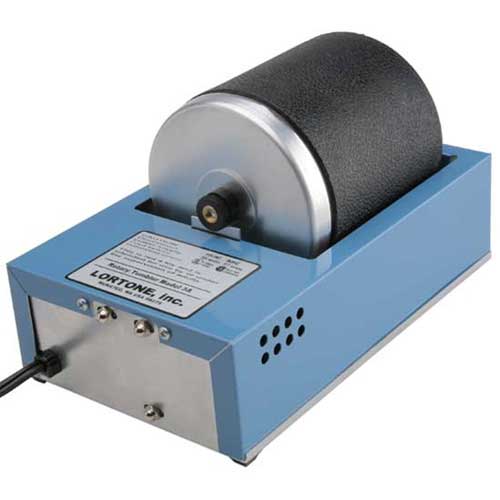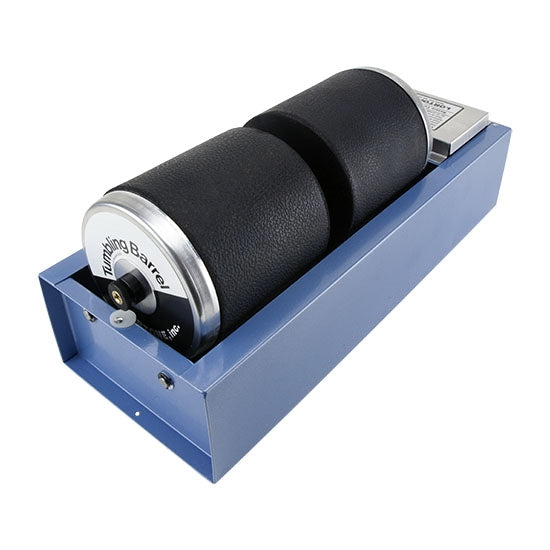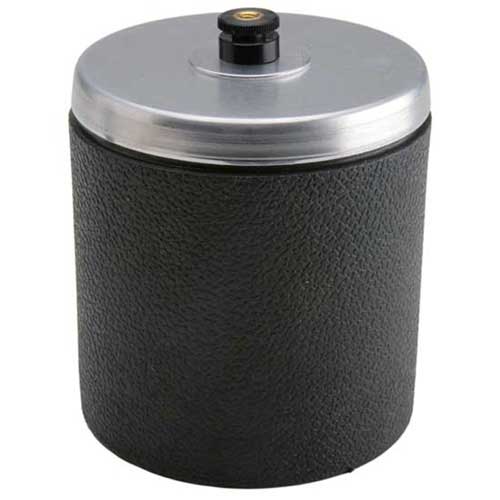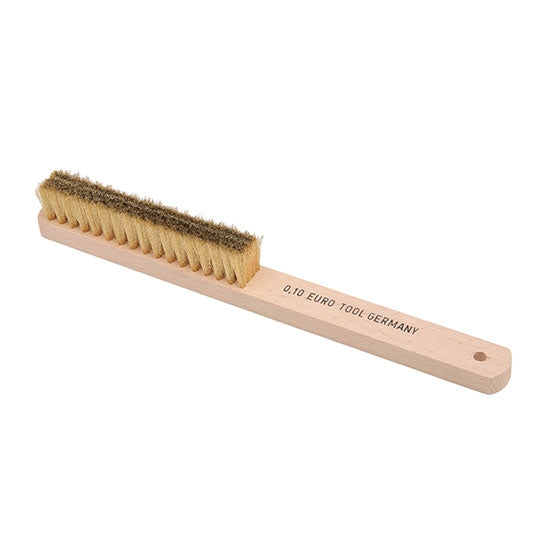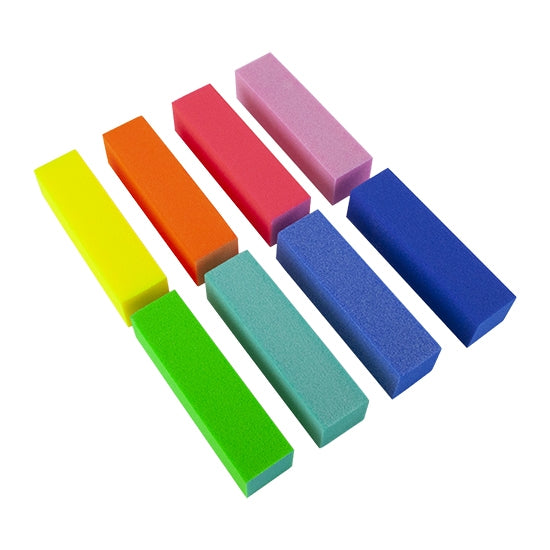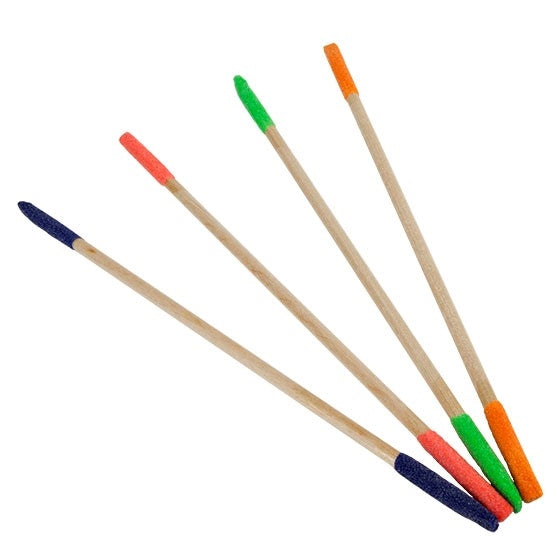-
3M Polishing Paper
- Regular price
-
$2.90 - $15.00
- Regular price
-
- Sale price
- $2.90
- Unit price
- per
3M Polishing Paper Washable and re-usable wet/dry papers. Each sheet is 5-1/2 x 8-1/2 inches. These polishing papers feel like paper towels, but they have a micron-graded abrasive bonded to the sur... -
Shine Rite Polishing Pads
- Regular price
-
$9.65 - $18.90
- Regular price
-
- Sale price
- $9.65
- Unit price
- per
Shine Rite Polishing Pads Use as a re-polishing or final polishing pad for all metals. Keep separate pads for different metals. Leaves a slightly matte luster. Each pad has a very thin sponge cor... -
Cool Tools Patina Gel - Liver of Sulfur in Gel Form - 1.25 oz
- Regular price
-
$9.95
- Regular price
-
- Sale price
- $9.95
- Unit price
- per
Cool Tools Patina Gel - Liver of Sulfur in Gel Form - 1.25 oz Cool Tools Patina Gel is liver of sulfur in a stabilized gel form. Not only is it the most convenient, easiest way to use liver of sul... -
Cool Tools Patina Gel - Liver of Sulfur in Gel Form - 4 oz
- Regular price
-
$19.00
- Regular price
-
- Sale price
- $19.00
- Unit price
- per
Cool Tools Patina Gel - Liver of Sulfur in Gel Form - 4 oz Cool Tools Patina Gel is liver of sulfur in a stabilized gel form. Not only is it the most convenient, easiest way to use liver of sulfur,... -
Patina Gel - Liver of Sulfur in Gel Form - 2 oz
- Regular price
-
$12.00
- Regular price
-
- Sale price
- $12.00
- Unit price
- per
Cool Tools Patina Gel Cool Tools Patina Gel is liver of sulfur in a stabilized gel form. Not only is it the most convenient, easiest way to use liver of sulfur, but amazingly it does not degrade in... -
Electra-Spin Wheels
- Regular price
-
$66.45
- Regular price
-
- Sale price
- $66.45
- Unit price
- per
Electra-Spin Wheels These amazing polishing wheels get into small, narrow areas that no other wheel does. Small AND flexible, in multiple grits makes previously difficult or impossible clean-up job... -
Soft & Flexible Sanding Block
- Regular price
-
$2.90 - $2.90
- Regular price
-
- Sale price
- $2.90
- Unit price
- per
Soft & Flexible Sanding Block Flexible foam block. Perfect for sanding metal clay in the greenware state.Note: Do not use for wet sanding. Do not soak in water. Made in the USA -
Mounted A/O Sandpaper Cartridge Rolls
- Regular price
-
$3.20 - $18.25
- Regular price
-
- Sale price
- $3.20
- Unit price
- per
Mounted A/O Sandpaper Cartridge Rolls Now even more convenient for your finishing processes, this aluminum oxide sandpaper cartridge roll comes already mounted on a 3/32" mandrel, ready to install ... -
Sunshine Sanding Sticks - 2 Piece Set
- Regular price
-
$5.15
- Regular price
-
- Sale price
- $5.15
- Unit price
- per
Sunshine Sanding Sticks - 2 Pc Set Washable, reusable and long lasting. These files make sanding your metal clay greenware easy and quick. These durable sanding sticks also work perfectly to "wet s... -
Brass Brush - Toothbrush Style
- Regular price
-
$3.80
- Regular price
-
- Sale price
- $3.80
- Unit price
- per
Brass Brush - Toothbrush Style Long handled brass brush for burnishing silver clay. 3 rows of 1/2" long fine bristles. Head is 1-1/2" x .25". Oak handle.Use the brass brush to burnish down the crys... -
Tropical Shine Large 4-Way Buffer
- Regular price
-
$8.70
- Regular price
-
- Sale price
- $8.70
- Unit price
- per
Tropical Shine Large 4-Way Buffer Use to refine metal clay greenware and finish all metals. Washable, reusable and long lasting. These files make sanding your metal clay greenware easy with their c... -
Flash Shiner® Bitty Buffer
- Regular price
-
$12.40
- Regular price
-
- Sale price
- $12.40
- Unit price
- per
Flash Shiner® Bitty Buffer Same white and green sides as full size Flash Shiner®. One sheet contains 27 break-off Flash Shiner® "Itty Bitty" Buffers. Size - 2-1/2" x 5/8". -
Flash Shiner® Buffer
- Regular price
-
$2.25
- Regular price
-
- Sale price
- $2.25
- Unit price
- per
Flash Shiner Buffer Two-sided buffer for polishing metals. This is a favorite staple in our studio for polishing! -
Flash Shiner® Buffer Block
- Regular price
-
$3.15
- Regular price
-
- Sale price
- $3.15
- Unit price
- per
Flash Shiner Buffer Block Four-sided buffer. This is a favorite staple in our studio for polishing! Size - 3.5" x 1.5" x 1.2". -
Flash Shiner® Buffer File
- Regular price
-
$2.25
- Regular price
-
- Sale price
- $2.25
- Unit price
- per
Flash Shiner Buffer File Two-sided buffer file. This is a favorite staple in our studio for polishing! Size - 7" x 3/4" -
Slurry Coated Polishing Strips Pkg/18
- Regular price
-
$24.75
- Regular price
-
- Sale price
- $24.75
- Unit price
- per
Slurry Coated Polishing Strips Slurry coated polishing strips are strong and durable. Unique Rayon and special propitiatory backing material sets them apart from traditional polishing paper, and re... -
ImpressArt’s Signature Rotary Tumbler
- Regular price
-
$300.00
- Regular price
-
- Sale price
- $300.00
- Unit price
- per
ImpressArt’s Signature Rotary Tumbler ImpressArt’s Signature Rotary Tumbler is designed to polish small and large quantities of metal jewelry and parts to the highest possible shine with minimal pa... -
Stainless Steel Shot Sieve
- Regular price
-
$18.00
- Regular price
-
- Sale price
- $18.00
- Unit price
- per
Stainless Steel Shot Sieve This impact-resistant 201 stainless steel sieve is the perfect tool accessory when tumbling metal jewelry and parts. The fine metal mesh separates polished pieces and sta... -
Jewelry Finishing Mix - Stainless Steel Shot - 1lb
- Regular price
-
$49.35
- Regular price
-
- Sale price
- $49.35
- Unit price
- per
Jewelry Finishing Mix - Stainless Steel Shot - 1lb Our stainless steel shot is a mix of pins, cones, rounds and cuts. All these shapes are necessary for a good polish. Avoid mixes without pins. Pin... -
Lortone® Tumbler - 3lb Rotary - 120V (US)
- Regular price
-
$124.95
- Regular price
-
- Sale price
- $124.95
- Unit price
- per
Lortone® Tumbler - 3lb Rotary - 120V (US) Lortone tumblers are designed to handle the weight of stainless steel shot and are used widely in the jewelry industry, so you can depend upon this machine... -
Lortone® Tumbler - 33B - 115V (US)
- Regular price
-
$179.00
- Regular price
-
- Sale price
- $179.00
- Unit price
- per
Lortone® Tumbler - 33B - 115V (US) Lortone tumblers are designed to handle the weight of stainless steel shot and are used widely in the jewelry industry, so you can depend upon this machine to las... -
Lortone® Tumbler Barrel Replacement - 3A
- Regular price
-
$44.80
- Regular price
-
- Sale price
- $44.80
- Unit price
- per
Lortone® Tumbler Barrel Replacement - 3A Replacement or extra barrel for your Lortone Rotary Tumbler. Note: Only use soap with no additives such as anti-bacterial, lotions, etc. in this barrel. Ha... -
Dura-Bull® ClearView Dual Barrel Tumbler - 2 lb
- Regular price
-
$179.15
- Regular price
-
- Sale price
- $179.15
- Unit price
- per
Dura-Bull® ClearView Dual Barrel Tumbler - 2 lb Dura-Bull ClearView Tumblers handle medium-sized runs and touch-up work with this dependable tumbler. Two clear barrels allow you to monitor two sepa... -
Dura-Bull® ClearView 2lb Rotary Tumbler
- Regular price
-
$158.00
- Regular price
-
- Sale price
- $158.00
- Unit price
- per
Dura-Bull® ClearView 2lb Rotary Tumbler Dura-Bull brand Tumblers handle small runs and touch-up work with this dependable tumbler. The clear barrel allows you to monitor your piece and an easy-to-u... -
Burnishing Compound - 4 oz
- Regular price
-
$2.50
- Regular price
-
- Sale price
- $2.50
- Unit price
- per
Burnishing Compound - 4 oz Specially formulated for jewelry finishers, this burnishing compound offers consistently great results. These compounds complement the unique ceramic and steel media shap... -
Scratch Brush - Brass - Buff Style
- Regular price
-
$5.70
- Regular price
-
- Sale price
- $5.70
- Unit price
- per
Scratch Brush - Brass - Buff Style Start with this brush and buff your freshly fired metal clay to burnish down the white surface before moving on to polishing. Very fine. Excellent for initial bur... -
3M Wet/Dry Sandpaper
- Regular price
-
$2.65 - $2.65
- Regular price
-
- Sale price
- $2.65
- Unit price
- per
3M Wet/Dry Sandpaper The abrasive on this sandpaper is made of silicon carbide. Use to smooth metal clay greenware and for finishing all types of metals.For metal finishing, the paper can be wrapp... -
Midas Black Max Oxidizer - 4oz
- Regular price
-
$24.65
- Regular price
-
- Sale price
- $24.65
- Unit price
- per
Midas Black Max Oxidizer - 4oz Use Black Max to achieve a very black base for oxidizing silver or apply it on gold with a steel-end brush to create an antique look. Made in the USA Precautions Wea... -
Agate Burnisher
- Regular price
-
$11.05
- Regular price
-
- Sale price
- $11.05
- Unit price
- per
Agate Burnisher The agate burnisher can be used to burnish metal clay after firing. Use for a final polish to bezels. Especially useful for the keum boo technique of applying gold foil to silver. S... -
Polishing/Finishing Sticks - Set of 6
- Regular price
-
$3.45
- Regular price
-
- Sale price
- $3.45
- Unit price
- per
Polishing/Finishing Sticks - Set of 6 Use to refine metal clay and reach any small crevice. These handy tools make it easy and convenient to smooth your clay pieces while in the greenware state. Th... -
Scratch Brush - Fiberglass - Pen Style
- Regular price
-
$8.50
- Regular price
-
- Sale price
- $8.50
- Unit price
- per
Scratch Brush - Fiberglass - Pen Style Use to polish without scratching metal or enamel. This pen-style fiberglass brush has retractable bristles that can be retracted or set at your desired length... -
Scratch Brush - Brass - 4 Row Soft
- Regular price
-
$10.15
- Regular price
-
- Sale price
- $10.15
- Unit price
- per
Scratch Brush - Brass - 4 Row Soft This quality german brass brush features 4 rows of fine brass bristles, 3/4" long. The extra long bristles make it easy to get into crevices.Pieces to be brushed ... -
Scratch Brush - Steel - Fine
- Regular price
-
$3.55
- Regular price
-
- Sale price
- $3.55
- Unit price
- per
Scratch Brush - Steel - Fine Stainless steel scratch brush with fine bristles for a soft satin finish or to burnish before polishing. Pieces to be brushed or burnished can be held in the palm of yo... -
Curved Burnisher - Wide
- Regular price
-
$5.35
- Regular price
-
- Sale price
- $5.35
- Unit price
- per
Curved Burnisher - Wide The curved burnisher is used to burnish larger areas. The tip is used to get into tight spots and crevices. Highly polished steel burnishing surface assures great results. U... -
Agate Burnisher Knife
- Regular price
-
$9.25
- Regular price
-
- Sale price
- $9.25
- Unit price
- per
Agate Burnisher Knife The agate burnisher can be used to burnish metal clay after firing. Use for a final polish to bezels. Especially useful for the keum boo technique of applying gold foil to sil... -
3M Radial Bristle Disc Set: 220, 400, Pumice, 6m, 1m Pkg/15
- Regular price
-
$36.75
- Regular price
-
- Sale price
- $36.75
- Unit price
- per
3M Radial Bristle Disc Set: 220, 400, Pumice, 6m, 1m All grits needed to create a mirror finish on all types of metal. 3M Radial Bristle Discs will get you started polishing with ease. This starter... -
Scratch Brush - Brass - Pen Style
- Regular price
-
$10.65
- Regular price
-
- Sale price
- $10.65
- Unit price
- per
Scratch Brush - Brass - Pen Style For burnishing freshly fired metal clay. This pen-style scratch brush has retractable bristles to give you a range of firmness in a compact size. Extend the bristl... -
Agate Burnisher Sword
- Regular price
-
$9.25
- Regular price
-
- Sale price
- $9.25
- Unit price
- per
Agate Burnisher Sword The agate burnisher can be used to burnish metal clay after firing. Use for a final polish to bezels. Especially useful for the keum boo technique of applying gold foil to sil... -
Polishing Cloth - Anti-Tarnish
- Regular price
-
$10.05
- Regular price
-
- Sale price
- $10.05
- Unit price
- per
Polishing Cloth - Anti-Tarnish Polishing cloth treated with a tarnish inhibitor for longer lasting shine. Generously sized cloth treated with a tarnish inhibitor to keep your jewelry sparkling and ... -
Soft & Flexible Sanding Block - 1 Block
- Regular price
-
$2.25
- Regular price
-
- Sale price
- $2.25
- Unit price
- per
Soft & Flexible Sanding Block Flexible foam block. Perfect for sanding metal clay in the greenware state. You will receive one block from our assortment of colors. Note: Do not use for wet sand... -
Wet/Dry Sandpaper
- Regular price
-
$2.35 - $2.35
- Regular price
-
- Sale price
- $2.35
- Unit price
- per
Wet/Dry Sandpaper The abrasive on this sandpaper is made of silicon carbide. Use to smooth metal clay greenware and for finishing all types of metals. Very fine grits for extra shine on your metal... -
Silicone Polisher - Black Barrel Set - Set of 4
- Regular price
-
$6.95
- Regular price
-
- Sale price
- $6.95
- Unit price
- per
Silicone Polisher - Black Barrel Set - Set of 4 Silicone-bonded polishers make quick work of achieving highly polished mirror finishes on entire pieces or select areas. Use with light pressure and ... -
3M Mini Scratch-Eraser Drum Kit
- Regular price
-
$28.40
- Regular price
-
- Sale price
- $28.40
- Unit price
- per
Mini Scratch-Eraser Drum Kit These MINI DRUMS of the “Scratch Eraser” disc are excellent for “wiping off” or “blending in” scratches and scuff marks on precious metals. They are also great for remo... -
Scratch Brush - Steel - 4 Row Soft
- Regular price
-
$10.50
- Regular price
-
- Sale price
- $10.50
- Unit price
- per
Scratch Brush - Steel - 4 Row Soft Steel hand brush with soft bristles for scratch brushing harder metals such as brass and bronze. Pieces to be brushed or burnished can be held in the palm of your... -
Miniature Mandrel - Screw - 3/32" Reinforced Shank
- Regular price
-
$2.00
- Regular price
-
- Sale price
- $2.00
- Unit price
- per
Miniature Mandrel - Screw - 3/32" Reinforced Shank Reinforced, threaded mandrel for use with 3M Bristle Discs, unmounted wheels, stones, miniature brushes, etc. 3/32" shank. Use to hold 3M Bristle ... -
Half Round Sanding Stick Set
- Regular price
-
$12.35
- Regular price
-
- Sale price
- $12.35
- Unit price
- per
Half Round Sanding Stick Set Use to refine metal clay greenware and finish all metals. Set of 6 half round sanding sticks. These nifty sanding sticks taper from 1/2" to 1/4" to get into ring shanks... -
Sanding Sticks - Medium Grit - Set of 4
- Regular price
-
$3.25
- Regular price
-
- Sale price
- $3.25
- Unit price
- per
Sanding Sticks - Medium Grit - Set of 4 Use to refine dry clay, metal, wood, plastic, any small crevice. These handy tools make it easy and convenient to smooth your clay pieces while in the greenw... -
3M 1" Mounted Radial Bristle Discs
- Regular price
-
$6.95 - $19.80
- Regular price
-
- Sale price
- $6.95
- Unit price
- per
3M 1" Mounted Radial Bristle Discs Mounted on a 3/32" mandrel, three 3M radial bristle discs deliver fast, superior results! The unique, three-dimensional abrasive/flexible bristle design provides ... -
Superflex Polisher - Green Barrel Set - Set of 4
- Regular price
-
$7.90
- Regular price
-
- Sale price
- $7.90
- Unit price
- per
Superflex Polisher - Green Barrel Set - Set of 4 Fine grit. Use to burnish and mirror finish all kinds of metals. Superflex is more flexible than silicone polishers. Synthetic rubber-bonded polishe... -
2" Radial Brush - 120 Grit - 4-ply for the JOOLTOOL
- Regular price
-
$30.80
- Regular price
-
- Sale price
- $30.80
- Unit price
- per
2" Radial Brush - 120 Grit - 4-ply The perfect alternative to wire brushes and buffing wheels. These versatile 3M™ Scotch-Brite™ brushes are excellent on any metal & wood for sanding, cleaning...
Showing 1 -50 of 233 items
- Choosing a selection results in a full page refresh.





































